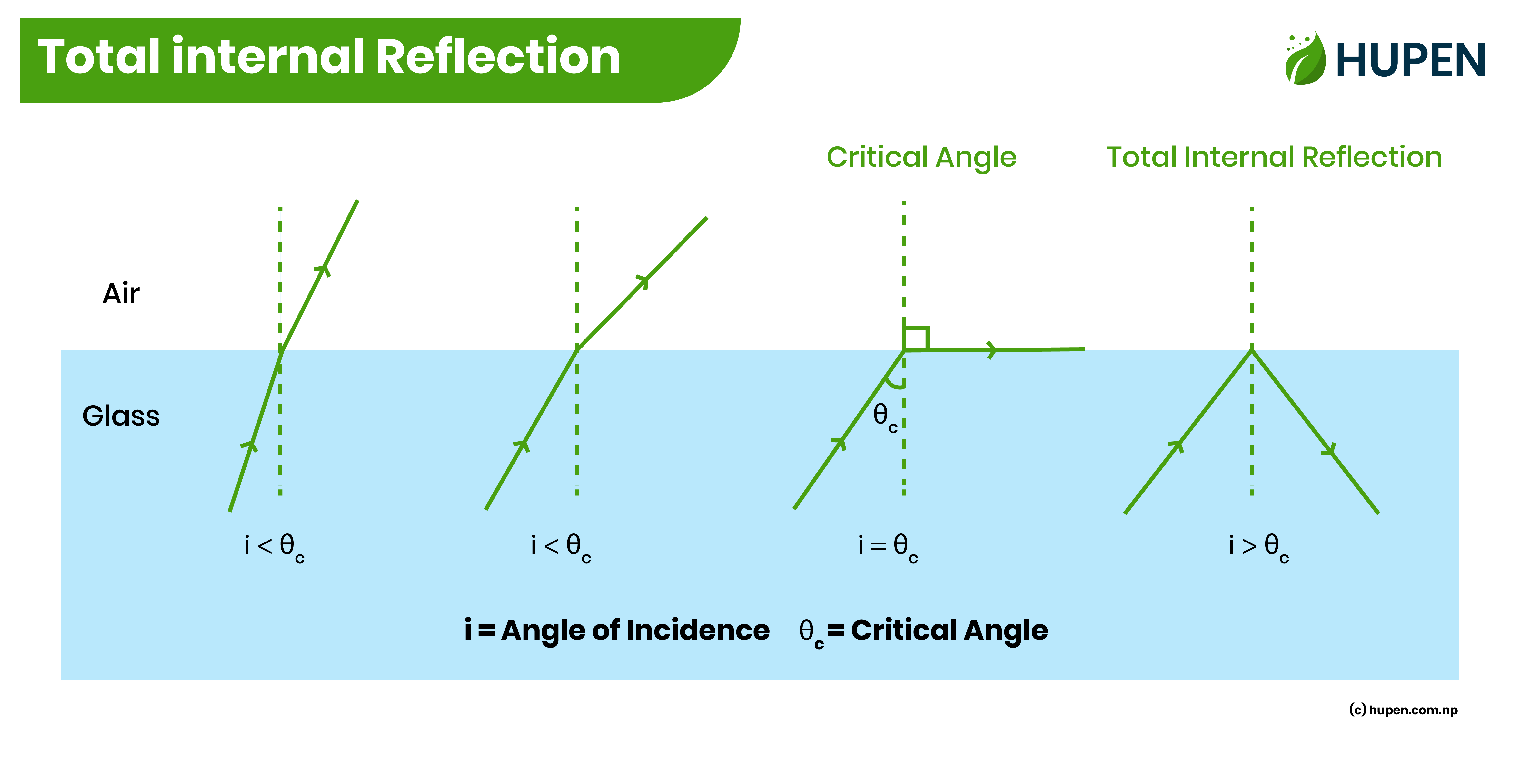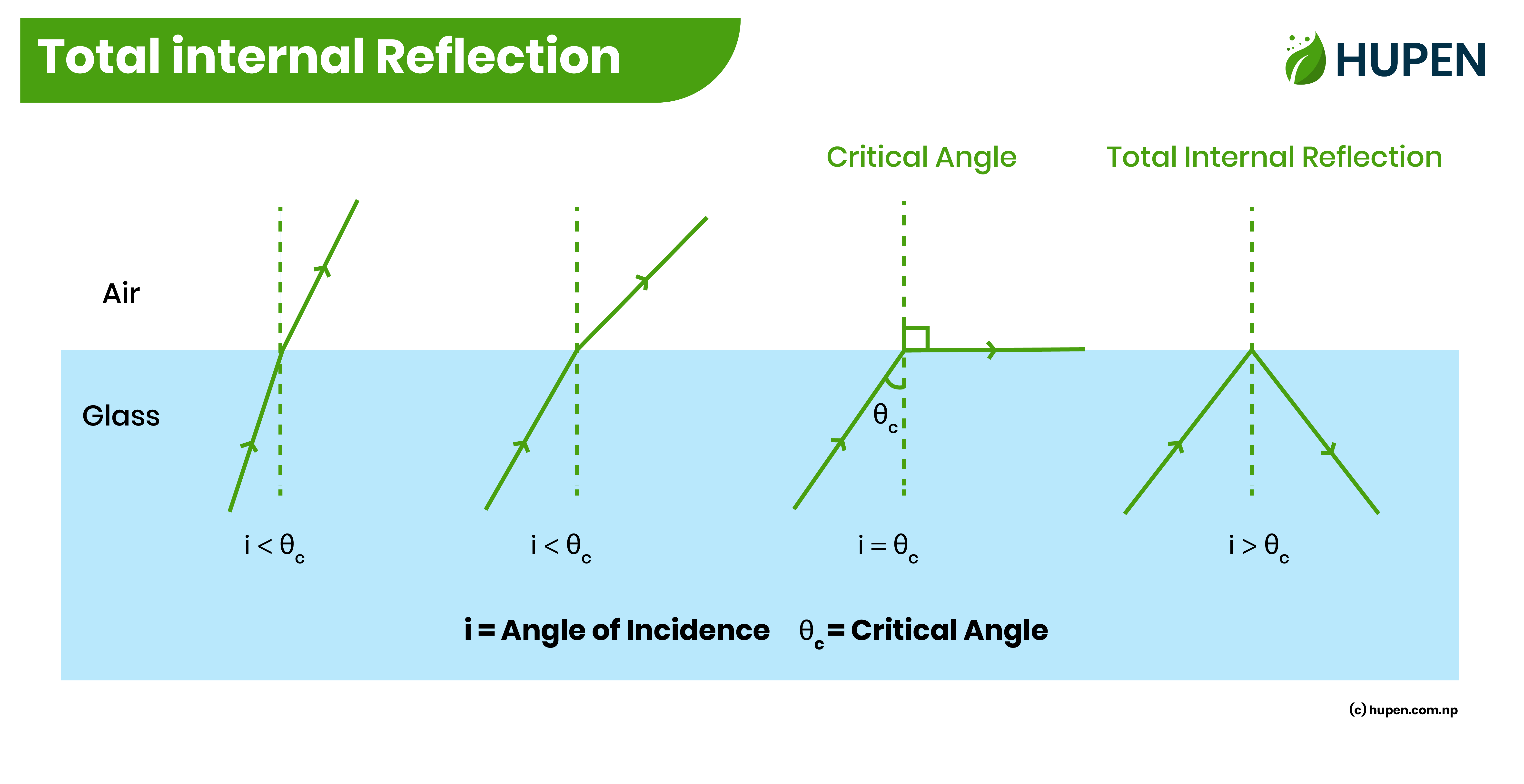What is Total Internal Reflection?
The reflection of a light ray into a denser medium when a ray of light traveling from a denser medium to a rarer medium makes an angle of incidence greater than the critical angle for the two media is called total internal reflection of light.

Conditions for Total Internal Reflection
1. The ray of light must travel from a denser medium to a rarer medium.
2. The angle of incidence must be greater than the critical angle.
What is Critical Angle?
The angle of incidence at which the angle of refraction is 900 when a ray of light travels from a denser medium to a rarer medium is called a critical angle. It is denoted by C. The critical angle of a given pair of media is calculated with the following formula.

Consequences of Total Internal Reflection
1. Sparkling Diamond
The critical angle of a Diamond is 24.40, which is very low compared with other materials like glass. The rays of light with an angle of incidence greater than the critical angle will go under multiple total internal reflections within the diamond. Hence due to the total internal reflection, we see the shining diamond.
2. Miraj
A mirage forms due to the total internal reflection of light in the atmosphere. When the ground is significantly hotter than the air above it, the lower layers of air become warmer and less dense. As light from distant objects near the ground travels through these layers, it bends upwards because it encounters regions of varying air density. Total internal reflection occurs when the angle of incidence is greater than the critical angle. This phenomenon causes our eyes to perceive an apparent reflection of objects, creating the illusion of water or an oasis on the hot horizon, even though it isn't real.
Applications of Total of Internal Reflection
Fiber Optic cable
A fiber optic cable consists of a core made of glass or plastic, surrounded by a cladding layer. The core carries light signals, while the cladding reflects the light into the core through a principle called total internal reflection. This structure allows light to travel within the cable over long distances without significant loss. In telecommunications, fiber optics transmit data as light pulses, enabling high-speed internet, phone calls, and TV. In the medical field, fiber optics are used for minimally invasive procedures like endoscopy, where tiny cables with a camera deliver images from inside the body, enabling diagnosis and surgery without major incisions.
Frequently Asked Questions – FAQs
Q1. What is Total Internal Reflection?
- The reflection of a light ray into a denser medium when a ray of light traveling from a denser medium to a rarer medium makes an angle of incidence greater than the critical angle for the two media is called total internal reflection of light.
Q2. What are the conditions for a ray of light to undergo total internal reflection?
- Conditions for Total Internal Reflection
- The ray of light must travel from a denser medium to a rarer medium.
- The angle of incidence must be greater than the critical angle.
Q3. What is the critical angle?
- The angle of incidence at which the angle of refraction is 900 when a ray of light travels from a denser medium to a rarer medium is called critical angle. It is denoted by C.
Q4. What is the critical angle of Diamond?
-The critical angle for the Diamond-to-air surface is 24.40.


